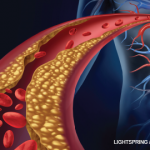Billing for RA with Active Disease: A 38-year-old female with RA returns to the office for a routine follow-up examination. She is on celecoxib, methotrexate, folic acid, and lansoprazole. The patient reports moderate pain, swelling, and stiffness in her wrists and most finger joints every day, which is interfering with activities such as opening jars, buttoning clothing, and using a computer keyboard.
The patient reports generalized morning joint stiffness lasting one to three hours on most days of the week, and she fatigues easily. The patient has a history of gastroesophageal reflux disease (GERD) but denies dyspepsia or abdominal complaints. The patient also denies fevers, headaches, chest pain, dyspnea, cough, oral ulcers, Raynaud’s phenomenon, rashes, hematochezia, insomnia, or depression. She is currently employed as a secretary in a law firm and is married with two young children, ages three and five years old.
Diagnosis: RA with active disease.
How would you code this history?



